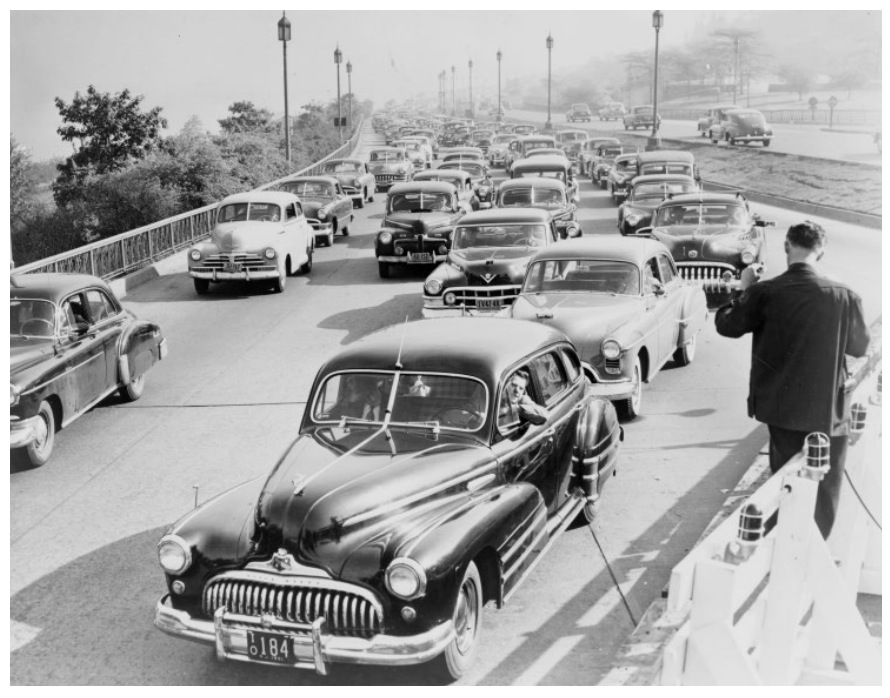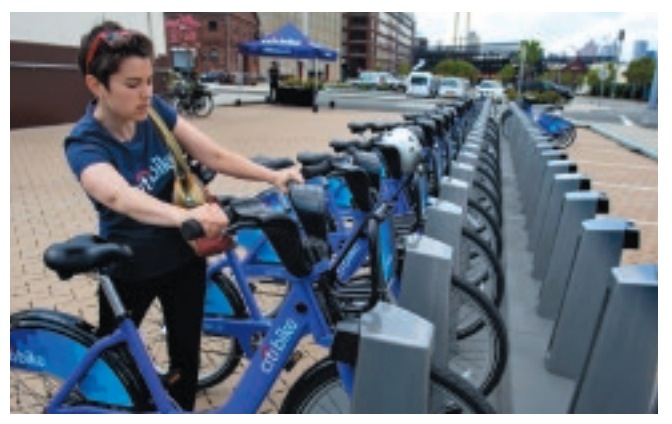TRANSIT CENTER
Executive Summary
 Recent innovations in urban transportation in the United States have consisted of resident-led efforts to create more ways of moving around the city. Rather than the adoption of new technology, these advances have centered on reintroducing human vitality into streets that have been lost to cars for decades. Our analysis of the human factors behind implementing small-scale change in a wholesale way shows that engagement from three areas of society is required for a city to innovate.
Recent innovations in urban transportation in the United States have consisted of resident-led efforts to create more ways of moving around the city. Rather than the adoption of new technology, these advances have centered on reintroducing human vitality into streets that have been lost to cars for decades. Our analysis of the human factors behind implementing small-scale change in a wholesale way shows that engagement from three areas of society is required for a city to innovate.
First and foremost, a civic sector that is resident-led, non-elite, and outside government—yet able to persuade local politicians to take risks—is paramount to the success of any city. Citizen-led campaigns can pressure authorities to change direction, diversify the mix of transportation options, and also provide evidence of why that change would be beneficial. Without a civic sector that can direct public support, urban transportation innovation will not reach its potential.
 Second, a bold mayor and transportation agency head who have both the courage to create the vision for a different kind of city and the management skills to compel their staff to do things differently are essential for the successful implementation of any change. Without the vision and mandate from the very top of city government, there is little chance of urban transportation reforms succeeding in the long run.
Second, a bold mayor and transportation agency head who have both the courage to create the vision for a different kind of city and the management skills to compel their staff to do things differently are essential for the successful implementation of any change. Without the vision and mandate from the very top of city government, there is little chance of urban transportation reforms succeeding in the long run.
Finally, agency adoption is essential for the thorough implementation of new transportation practices. Without staff willing to challenge the existing culture and processes within city government, the city would only have pilot projects here and there to show for all its efforts. Without agency staff adopting new practices, wholesale change is not possible.
The following strategies can encourage more urban transportation innovation in the future:
- Encourage civic organizations to emerge and reframe transportation issues as quality-of-life issues.
- Reinforce public support through political organizing and leveraging technical expertise or data.
- Bolster the courage of leaders willing to take on reform by connecting them with visible public support and a compelling communications strategy.
- Position advocates on the inside to catalyze a reorientation of city agency and staff culture.
- Perpetuate new norms by changing agency standards.
- Create federal and state policies that recognize and reward small-scale urban transportation reform and tip the scales toward innovation.
Though much progress has been made in several cities, the human-oriented transportation changes examined here are not pervasive nationwide. Only a handful of cities have made lasting reforms that will stand the test of time, while the majority of federal and state transportation policies continue to support auto-oriented development. With the information here, we hope that more urban residents will take up the fight and continue to challenge the status quo and reclaim the streets that are the lifeblood of their cities.
Download full version (PDF): A People’s History of Recent Urban Transportation Innovation
About Transit Center
transitcenter.org
We spark innovations and support policies that improve public transportation for riders, businesses and communities. Better urban transit and increased ridership – along with housing affordability, good community design, equitable economic development, and other low-carbon modes of transportation such as walking and biking – are essential ingredients in urban vitality. Improving mobility for all will better the environment and public health through cleaner air and reduced carbon pollution, bolster the economy and increase access to jobs, and contribute to social equity and stronger mixed-use neighborhoods.
Tags: Innovation, Transit Center, urban






 RSS Feed
RSS Feed